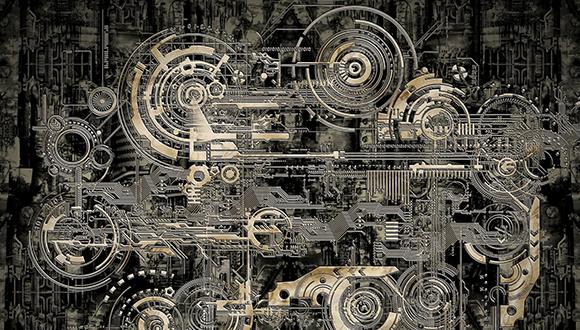School of Mechanical Engineering Oshrat Klein and Lior Chertkow
School of Mechanical Engineering Seminar
Wednesday, March 27, 2019 at 15:00
Wolfson Building of Mechanical Engineering, Room 206
Micro-channel flow of electro-rheological fluids
Lior Chertkow
M.Sc. student of Prof. Alex Liberzon.
School of Mechanical Engineering at Tel-Aviv University.
Electro-rheological fluids (ERF) are suspensions of polarizable particles in a dielectric fluid, rapidly increasing their effective viscosity upon application of an electrical field. Fast response is useful in multiple applications such as dampers or actuators. Miniaturization of the mechanical systems pose new requirements and require new ERF with smaller particles suitable for microchannels. The particle motion and the dynamics of viscosity changes in microchannels has not yet been studied in detail.
The main focus in this study is on the detailed experiments of a microchannel flow of new ERF combinations. In addition, we study the effect of the various channel widths (electrode gap) on the response time and stresses in the microchannel. We explore the phenomena using microscopic particle shadow velocimetry (μPSV) technique.
We obtain velocity field of the solvent with PIV tracers and compare it with the results with ERF particles. Using mass conservation and direct measurements of particle velocities the average velocity of the solvent is obtained, and the relative velocity is used to estimate the additional drag force driven by the electric field. We also reveal the effect of the electrode gap, which does not trivially scale with the electrical field strength, and visualize the two different structures in the microchannel.
Oshrat Klein
MSc Student of Dr. Yaron Toledo
Surface gravity waves mostly govern the flow in the thin layer that connects the ocean and the atmosphere; hence, they have a significant effect on momentum, energy, heat and mass exchanges between air and water layers. Modeling this two-phase flow is of great importance in the investigation of the Earth's climate and provides greater insight into various environmental processes. However, even our understanding of the relatively simple problem of uniform current effects on water waves in a single-phase problem has significant gaps.
The first part of the work investigates wave interaction with mean current. This corresponds to a potential flow problem. A new solution for the near surface dynamics and kinematics is suggested. In contrast to known solutions, it is continuous on the free surface.
The commonly used theory employs a velocity potential function obtained from averaged mean sea levels (MSL). The basic linear wave-current interaction may then be represented by the superposition of the velocity potential of finite amplitude waves without current and the velocity potential of a constant current (U0 x).
In this approach, even without ambient current, the dynamic and kinematic boundary conditions are expanded about the MSL to the first order using a Taylor approximation. This does not provide an accurate behavior* in the near surface region. For the wave-current problem, this limitation is even more problematic since the current also oscillates in the upper layer due to the changing surface elevation. In order to account for this discrepancy, this work presents a continuous solution for the wave and current velocity potential function for a 2D curvilinear coordinate system that follows monochromatic waves in the upper layer, and decays to the common Cartesian coordinates with depth. Unlike the traditional approach, the linear problem is not simplified using a vertical Taylor approximation. Instead, a longitudinal approximation is employed. A solution to the boundary value problem is then found which better satisfies continuity near the free surface.
The second part of the work addresses wave-shearing current in the presence of turbulence. In high energetic environments, there are several additional processes, which cannot be accounted for using a potential flow approach. In particular, when currents have shear and there are significant whitecaps (wave breaking), there may also be important upper layer turbulence. Nevertheless, there is currently no formulation for waves on shearing current in the presence of turbulence. Incorporating these effects in wave models may be expected to be of great importance for these environments. It will also serve as a first step towards a two-phase air-water model.
In the absence of turbulence, the wave flow can be modeled using Euler equations and a WKBJ approximation. In this approach, the zeroth order solution yields the Rayleigh equation for the vertical orbital velocity and the dispersion relation in the presence of vertically shearing current profiles. The same approach is used in the present work for wave motion on turbulent flow by applying the WKBJ approximation to the Reynolds average Navier-Stokes equation. The zeroth order solution together with the appropriate boundary conditions are used to construct an augmented Orr-Sommerfeld type equation, which extends the Rayleigh equation to include vertically changing eddy viscosity profiles. The resulting formulation yields a system of eigenvalues (celerities) and eigenfunctions (vertical velocity profiles), which are solved numerically. This permits for inspection of the effect of various eddy viscosity profiles and vertically shearing current profiles on orbital velocities and dispersion.


